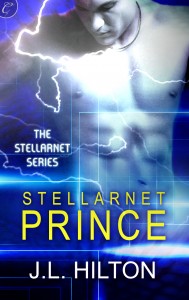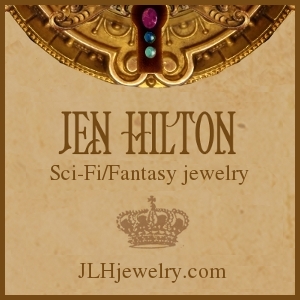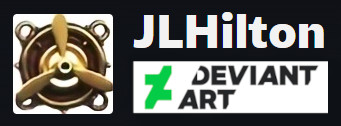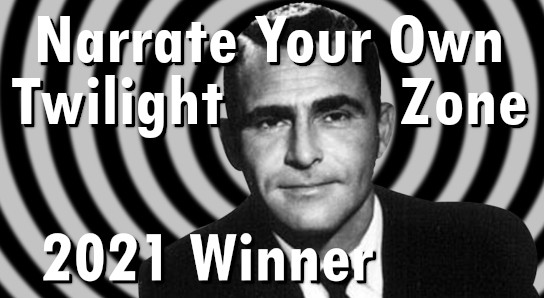 This interview originally appeared November 10, 2012, on author Ruth Diaz’s blog.
This interview originally appeared November 10, 2012, on author Ruth Diaz’s blog.
Ruth Diaz: What got you started writing?
J.L. Hilton: I can’t remember a time when I wasn’t telling tales. Before I could read, I drew picture books and acted out stories, either by dressing up or by using dolls and puppets. I won several writing contests in school, and had a short story published in Dragon magazine by the age of 18. I went into journalism and did the non-fiction thing for newspapers and magazines for awhile, then drifted back into fiction again after my kids were born.
Ruth Diaz: What draws you to science fiction?
J.L. Hilton: I grew up with science fiction – Star Wars, E.T., Star Trek, Alien, Twilight Zone, just to name a few. I used to write a lot of fantasy and supernatural, but with age I’ve grown to love technology more and magic less. I have a passion for the Internet, video games, devices, social media, and all of their potential. We live in remarkable times. The future is now.
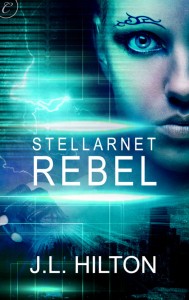 Ruth Diaz: The thing that got me hooked on Stellarnet Rebel, even before I developed an attachment to the characters, was the world building. What were some of your inspirations for the colony on Asteria?
Ruth Diaz: The thing that got me hooked on Stellarnet Rebel, even before I developed an attachment to the characters, was the world building. What were some of your inspirations for the colony on Asteria?
J.L. Hilton: Thank you so much for saying so. It took a tremendous effort to build the background for my characters, and I spent many hours doing research on everything from NASA and the International Space Station, to the United Nations and world history, to the physiology of dolphins and electric eels.
In 2009, I re-watched Babylon 5. That show was made fifteen years ago, before we had the Internet, smart phones and laptops. Also before widespread use of security cameras, I guess, because I often found myself wondering how so many people got away with so much on that space station! Where were all of the security cameras?! And they still read printed newspapers in 2258? Really?
I found myself wanting to see something similar to Babylon 5, but extrapolated from the social trends and technology that we have right now. When I began writing Stellarnet Rebel, I wasn’t trying to write “cyberpunk.” I was trying to envision a future where people used the Internet and whose lives revolved around social/interactive media and gaming, as they do now. What would the world be like when the current generation of MMORPG-ers, Tweeters and Facebookers grows into middle age? And what will it look like when that technology moves into outer space?
Other inspirations included: 1) a book I read about Biosphere 2, and 2) my husband’s obsession with Legos (he bought them for the kids, of course). I came up with the idea for standardized space colony modules or “blocks” that would interlock. Hallways, stairwells, pipes and wiring would line up and interconnect when the modules were set side-by-side or on top of each other. Blocks could be manufactured by different countries and still match up, wherever they were sent in the universe. So you could start a settlement with one block, or ten, and keep adding to it very quickly and efficiently. No need for building tools or construction workers on the planet itself. Not even any need for an atmosphere or fertile soil, because each block – ideally – would have its own air processors and greenhouse. Though, as we see in Stellarnet Rebel, that’s not always the case.
Ruth Diaz: Which comes first for you, the characters, the world, or the plot?
J.L. Hilton: Stellarnet Rebel came to me in my sleep. I had a dream of Duin and Genny meeting for the first time. The characters, the setting and the basis for the plot were all there, and that scene appears in the book pretty much just the way I dreamed it. The characters, setting and – to some extent – the basic plot all happened simultaneously.
Even when I’m awake, it seems to come to me as a package deal. A few of my WIP: Dreolan and Cuilleen are raggedy adventurers trying to survive in an alternate-reality Dark Age Europe by accepting preternatural employment. Ephelia is a visitor to a far-flung space station turned interstellar cultural crossroads who hires Raldr to protect the alien art she acquires for collectors back on Earth. Vera and Boon are orphaned farm kids turned con artists in a weird west where hell literally breaks loose and a steampunk ouija board might be the only thing that can save their lives.
For me, who the characters are stems from where they live and what they are doing. So far, I’ve never conceived of a character without a home, or a plot without characters. But I dunno, if I HAD to pick one, I’d say characters come first, then setting, and the plot continues to develop as I plan, outline and write.
Ruth Diaz: Tell us a little about your new book, Stellarnet Prince.
J.L. Hilton: It’s the sequel to Stellarnet Rebel, and continues the story of interstellar news blogger turned Net celebrity Genevieve O’Riordan, who is the first journalist to break the news of an alien war and also the first human to have a relationship with an alien. Or aliens, plural, in this case. That the series turns into a M/F/M storyline is a bit spoilery, but anyone who reads the reviews of the first book and cover copy of the sequel will know it, anyway. How they reach that M/F/M situation by the end of book one is a bit unconventional, and repercussions from their triangle continue to be felt and dealt with in book two, as do the challenges they face from bigotry and xenophobia, some pretty dangerous secrets and further strife on the Glin home world.
Stellarnet Prince is classified as science fiction and romance, and there’s plenty of both (the first book is classified as science fiction and thriller). The sequel delves deeper into the personal struggles of the heroes and their relationships to each other, as they are faced with a whole new set of challenges. But the story also gets bigger, introducing new characters, new technology and new twists only hinted at in the first book. We learn a lot more about the Tikati invaders, the world of Glin, the heroine’s family and what Earth is like in 2062.
